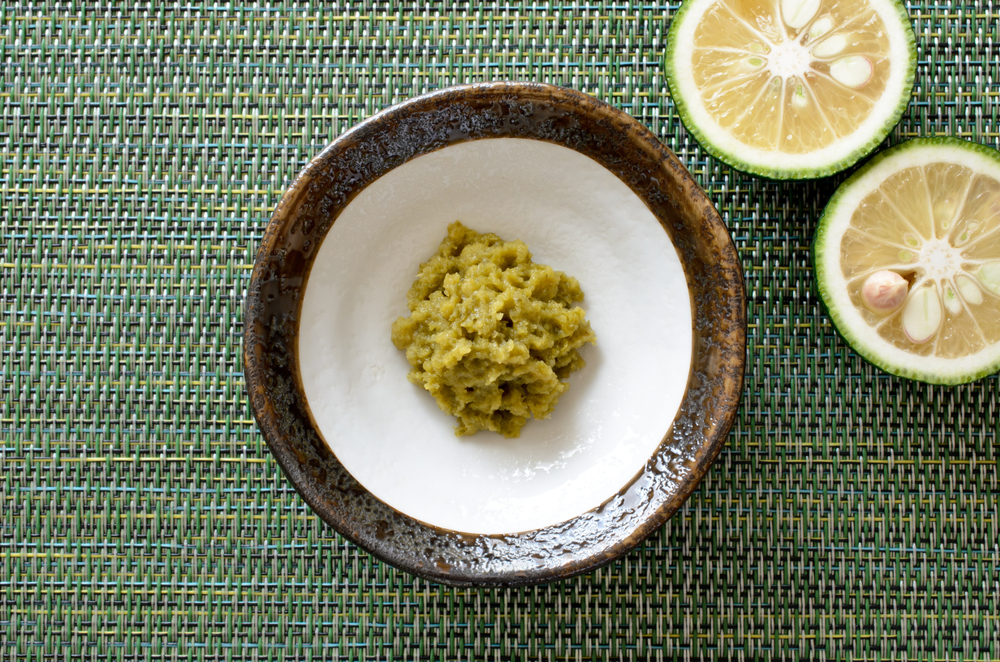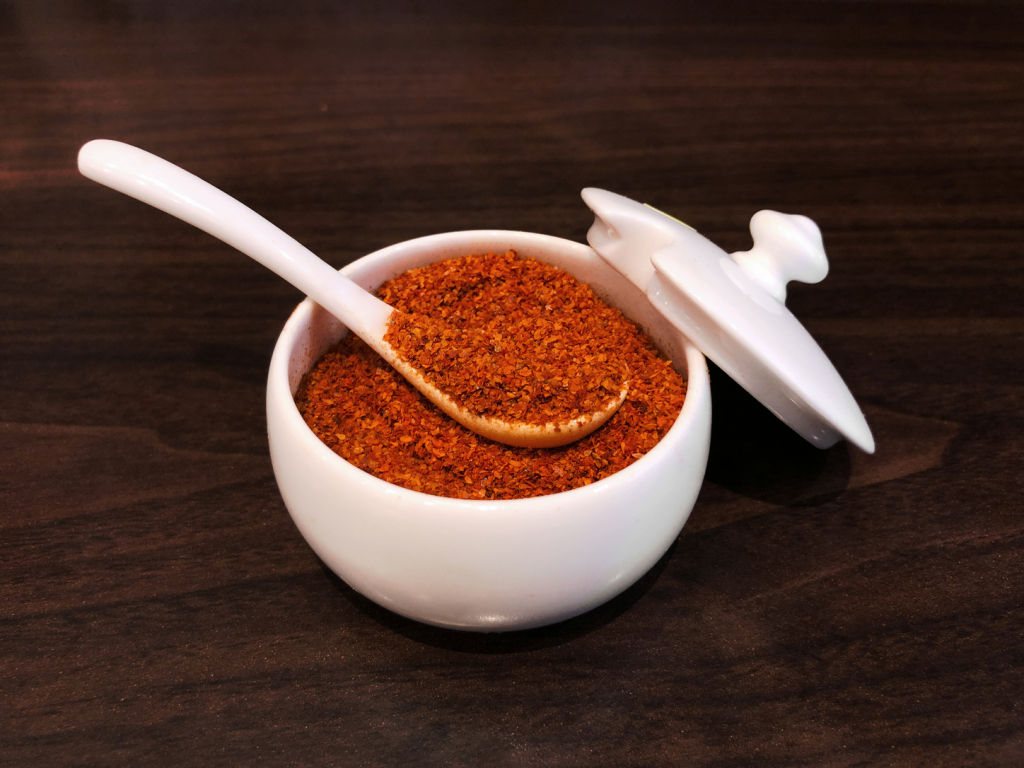Many people wonder why Japanese food isn’t spicy. Indeed, for those looking for red-face-tongue-swelling spicy, Japanese food is not where you’ll find it. But Japan has a few unique spice combinations and adopted recipes which turn up the heat in a distinctly Japanese way.

What are Common Japanese Spices?
It’s no secret that Japan in general doesn’t do well with the heat from typically ‘spicy’ food. Go to an Indian curry house in Japan, ask for something spicy and you’ll get the heat of a korma. Even then, there will probably be people eating it while mopping sweat from every crevice.
That said, Japan has several unique spices which add a different type of heat to food when compared to spices more commonly found elsewhere, such as chili and pepper.
The main Japanese spices are wasabi, seven spice, yuzu kosho and sansho (Japanese pepper). Some people include karashi (mustard), too.

Wasabi
To someone from the west, wasabi (a type of horseradish), is perhaps the most recognizable of all the spices found on the archipelago. Famous for its use as a spicy paste to accompany sushi, in Japan fresh wasabi is also available.
The type of spice found in wasabi is different to that of spicy curry. Rather than a hot sensation, it is more of a cooler spiciness. The spiciness in wasabi paste is different from that in fresh wasabi. The latter should not make eyes stream and the freshness is often discernible, particularly when compared directly with the powder.

Seven Spice (Shichimi Togarashi)
Seven spice is a typical Japanese spice blend. In the west, we have chili powder, which includes chili powder and garlic, with seven spice being Japan’s version. Seven spice is sprinkled on everything, from soba noodles to rice dishes.
The ingredients are sesame seeds (black and white), chili flakes, orange zest, seaweed, poppy seed and sansho. This leads to a complex flavor palette, with umami from seaweed and sweetness from orange zest to toasty, deep notes from the black seeds.
Another take on seven spice is black seven spice, in which the chili and sansho are ground until black. It is used for heavier meats such as duck and beef, while seven spice is best for chicken and vegetables.

Yuzu Kosho
Yuzu kosho is a lesser known, but just as delicious, Japanese spice blend. Yuzu is a type of Japanese citrus, a tiny yellow ball which tastes like a floral version of a lemon.
To make yuzu kosho, salt, chili and yuzu are blended together into a paste then left to ferment, turning green. The resulting condiment is somewhat bitter and salty, with a sour citrus hit. It is often used in Japanese hotpots and with yakitori and sashimi, to add extra citrusy flavor to a dish.

Sansho
Sansho, also known as Japanese pepper, is similar to its red cousin, Sichuan pepper. Made from the peppercorns of a prickly ash tree, it is green and prickly.
For the uninitiated, the spicy sensation from sansho creates a tingly, numbing effect on the mouth, known as paresthesia. Putting in too much sansho can result in being unable to taste anything for a while, yet with the right amount, sansho can add a delicate, citrusy flavor to dishes.
Spice bonus: Chili Oil
Chili oil, known as raa-yu in Japanese, is actually a Chinese spice oil, commonly used in historically Chinese foods such as ramen and egg fried rice.

How to Use Japanese Spices?
Depending on the spice, Japanese spices can be tricky or easy to work with. All the above spices are designed to be used as condiments, added post-cooking.
Fresh wasabi needs to be peeled and grated directly onto food, or into soy sauce for a sushi dip. Yuzu kosho, as it is particularly salty and comes in a paste, should be mixed a little before adding to a dish.
Seven spice can be liberally sprinkled into anything and Sansho (powder) can be sprinkled, too. Sansho is also available in other forms such as oil, which in turn must be used sparingly.

Popular Spicy Japanese Food
It needs to be noted that popular Japanese spicy food is often probably not even from here. That spicy, bright red ramen? Chinese. Red Japanese hotpot? That’s probably made with Korean sauce. Spicy skewers? Korean.

Spicy Japanese Recipes
Traditionally Japanese recipes aren’t meant to be spicy, as Japanese food is about preserving the subtle flavors in a dish. However, we’ve found a couple of rare examples:
Karashi Renkon (Spicy Lotus Root), where the lotus root is filled with mustard
Omelet with Cod Roe. Cod roe is sometimes referred to as “spicy red eggs” and this recipe tells you how to make a delicious Japanese omelet with cod roe eggs as a filling.

Spicy Japanese Snacks
Popular spicy Japanese snacks include:
Karamucho, which translates to “very spicy,” is a potato snack which holds chili potato chips in a black and red packet exploding into flames. Suffice it to say, the chips are not so spicy.
Kaki no tane are slightly tingly mini senbei chips.

Can I get Spicy Food Near Me?
For those in Japan, it may be best to head to a Korean restaurant or else a Taiwan ramen restaurant, both famously spicy.
Further Spicy Reading
For more spiciness, check out these related articles about Japanese spicy food in Tokyo:









